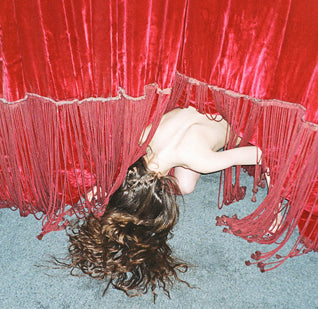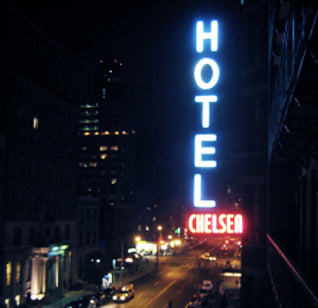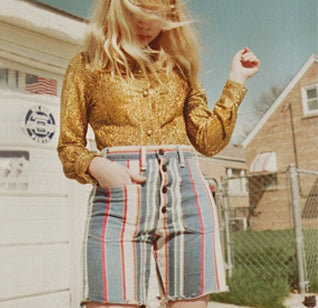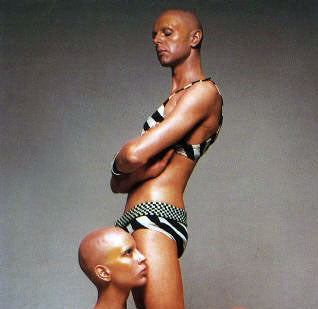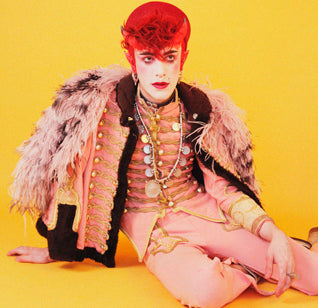MALE MAKEUP MYTH
Why men are never going to wear make-up
by Georgia Mizen
The Media really wants us to believe in the myth of the makeup wearing man. His image appears in GQ, in Vogue and even on the shelves of Debenhams. Male make-up is supposedly the new frontier of grooming for men, the latest horizon for equality between the sexes, but in reality is treated as no more than a gimmick and joke by your man on the street.
Some giant cosmetic brands, including Clinique, Marc Jacobs and Tom Ford, are releasing make-up lines for men, and marketing them with masculine language - claiming foundation as the stamp of the modern metrosexual. But the idea these companies are so keen to promote, that all men from all walks of life will make themselves up every day in a concoction of BB cream and guylashes, is a proven myth: it has not caught on in the mainstream even after millions have been spent advertising it.

Kate M. 'Pop Art Make-up', 2013
Sure, some men could do with a bit of blusher now and then, lip plumping perhaps, or just a good base coverage of foundation to wash over last night’s ill-advised whiskey shots at 4am, but try telling them that. Gender lines are supposedly blurred – not when it comes to cosmetics. Men’s washbags are dominated by self-conscious Nivea face cream and aggressive Bulldog scrubs for a reason: most men won’t wear make-up.
One of the most cited reasons why men won’t wear lipstick is because it’s considered a woman’s domain – there is still not equality in fashion trends. The fact we have words like androgynous to explain women wearing men’s styles lay proof to that; in fashion the boundaries between masculine and feminine are as cleanly drawn as they were sixty years ago. Much like most men won’t wear skirts – except perhaps on the catwalk – they also won’t be donning gloss or powder on a daily basis any-time soon.

Victoria Stutz, 'Madhatter Project', 2012
The no make-up selfie craze gave us a hint as to men’s feelings on slap: that they’ll slather it on for a laugh, to make a point or for charity, but that’s all, a quick dabble with no repercussions. Women took it off for a change, and men put it on. Yes, we’ve come to the point where men can adorn themselves without being abused for it, but they’ll still quickly wipe it off after their photo-op.
Men in make-up, much like the male nude, are depicted in mainstream culture as humorous rather than sexually appealing. Men who wear make-up are called “different”, like goths or Eddie Izzard. Even the labelling of male make-up doesn’t sound serious: manscara and guy-liner are hardly the most sophisticated of names. Stage make-up, you might say is one thing, but wearing cobalt shadow and a hint of highlighter on a delicately sculpted cheekbone down the bookies is quite another.

Lyle Lodwick for Wonderland Magazine, December 2010
Sadly the homophobic and ignorant notion of “Gay panic” is elucidated by the very touch of foundation to some. In the 1920s carrying a powder puff or a lipstick supposedly screamed “queer” and we can hardly claim it is different now. “Feminine” objects have long been associated with being gay, and make-up in the eyes of most men doesn’t fall far from that tree. Drag queens and cabaret performers may be dolled up to the nines, but it’s always a caricature and camp. With these ill-informed preconceptions it is no wonder make-up has not made the transition from stage to street.
Negativity towards make-up comes from the thought of it rather than the look. It can actually be pretty good stuff and its benefits are espoused by the likes of Bradley Cooper and Harry Styles on the red carpet. But social conditioning is ingrained and so many won’t even hear of it.

Cole Mohr, The Block Magazine, 2010
Men in the public eye like Russell Brand and the sensational Eurovision winner Conchita may be paving the way for black-rimmed eyes and long locks, but it’s a short road with a sudden drop. They may be admired and even celebrated, but there are still those that condemn them. The “painted man” was a common fear on city streets in the roaring twenties, but he’s never come into fruition: he’s as much a myth now as he ever has been.












